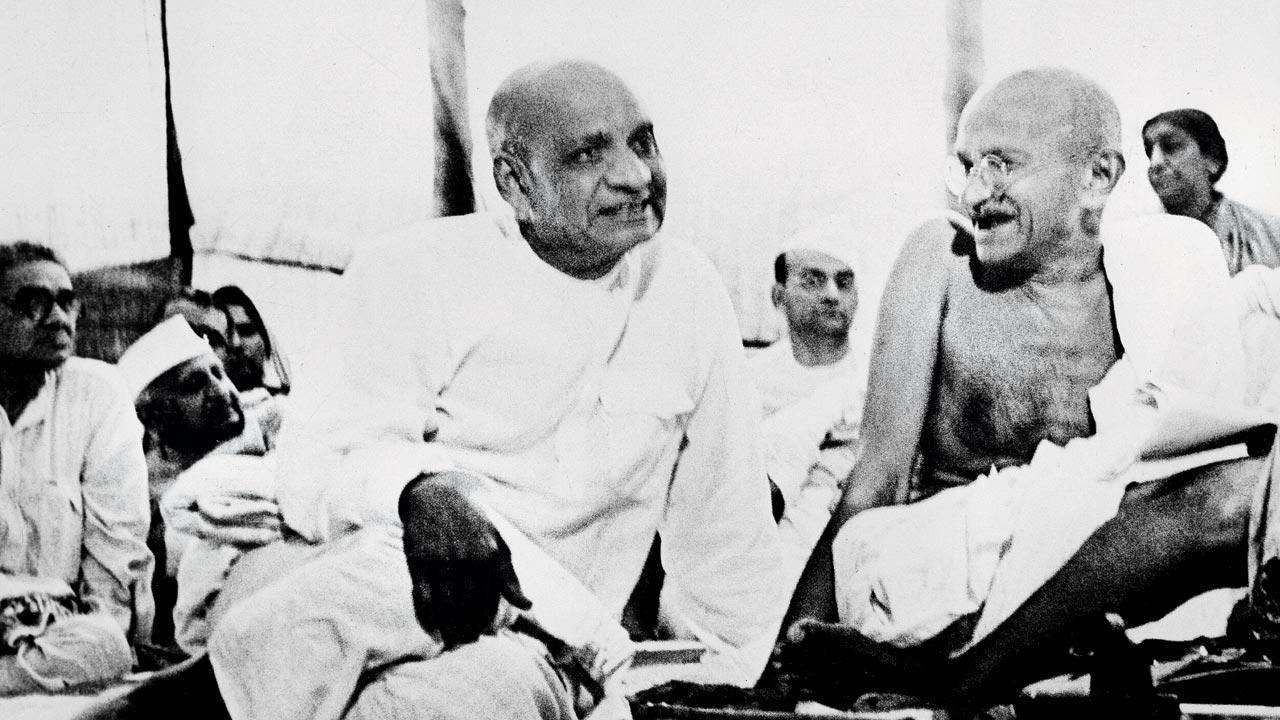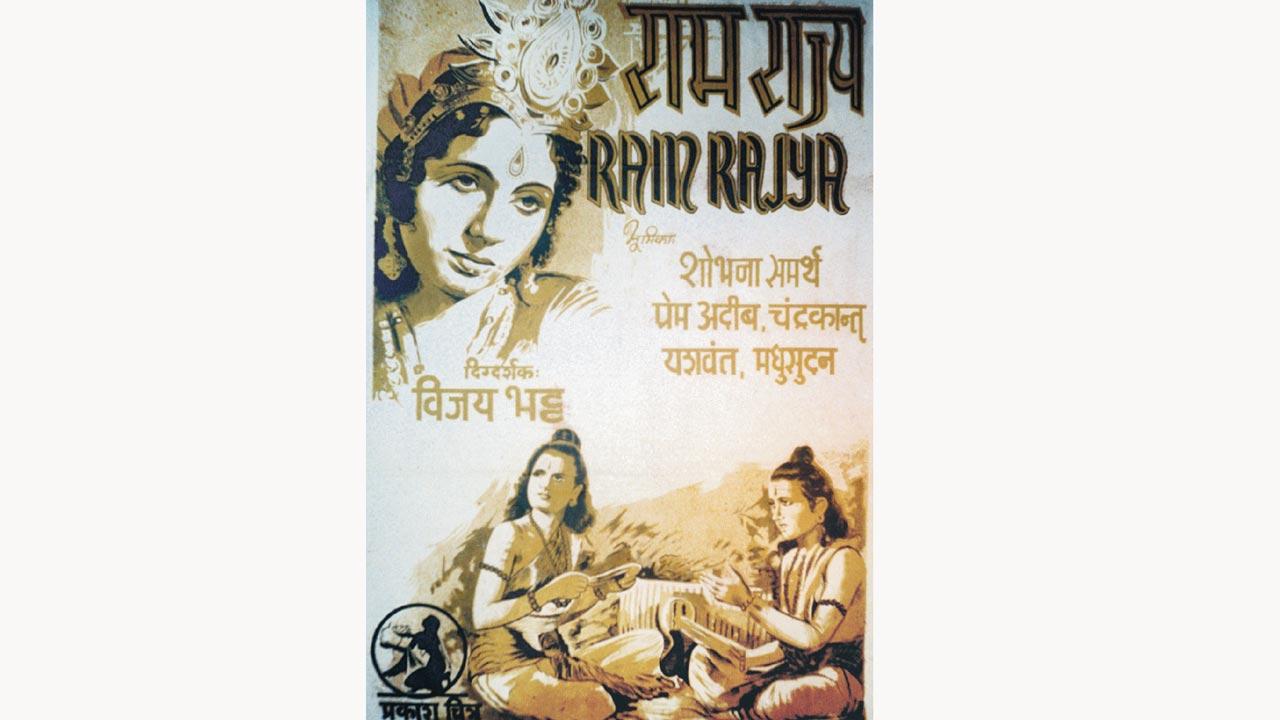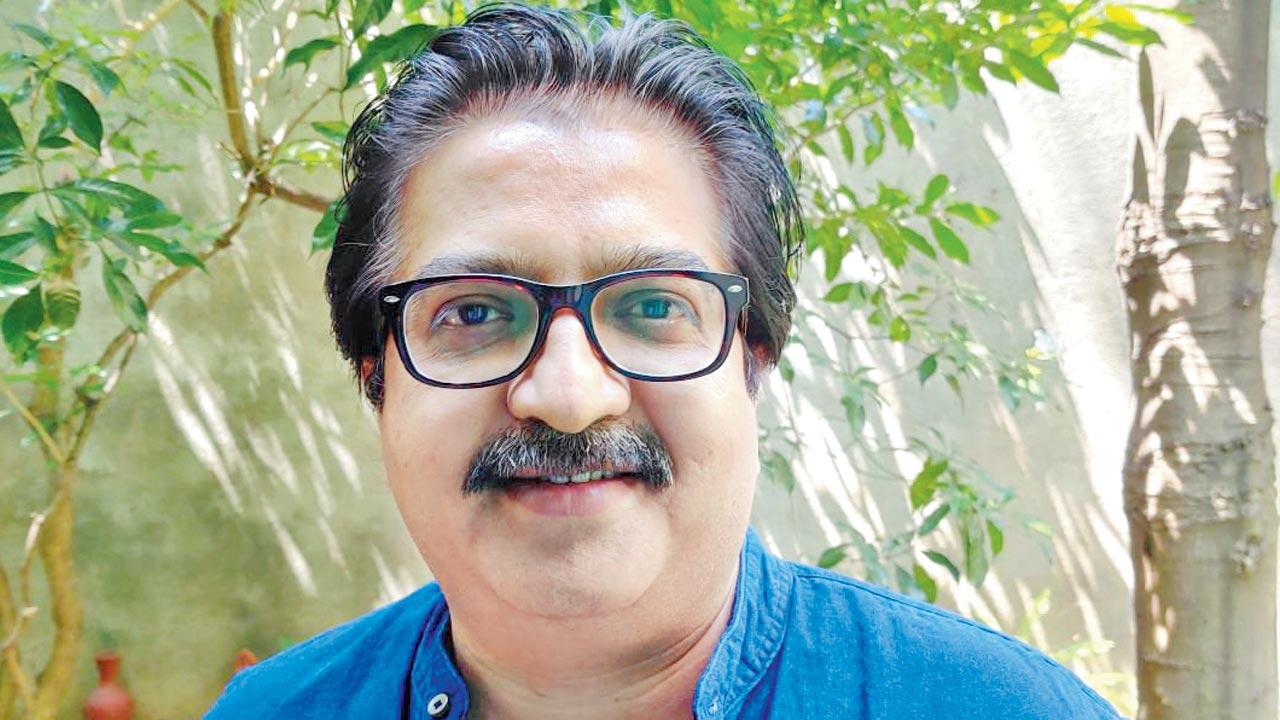The Mahatma may have had a complex relationship with the movies, but a newly researched book reveals rare moments when the nationalist flirted with the camera and indulged in binge-watching

Mahatma Gandhi seen with Sardar Patel. In a letter dated 1934, he writes condescendingly about the strain watching films was causing to the eyes and brain. Pic/Getty Images
Mahatma Gandhi was not someone who’d easily shift from an idea or thought, especially not when writing a letter. But in one of his correspondences to Sardar Patel, from Jorhat in Assam on April 18, 1934, his cheerful tone—“It is about time for prayers. The birds are singing. It dawns earlier in these parts; twilight appears at 5 am”—suddenly and unpredictably turned into a lament about cinema: “A strange epidemic seems to have attacked children in Ahmedabad. Some say it is due to the cinema. I would not be surprised if it is. Observers say that it imposes a great strain on the brain and the eyes.”
Prakash Magdum, former director of the National Film Archives of India (NFAI), Pune, calls this digression “strange”. But, he feels that it is also a reflection of Gandhi’s “ambiguous relationship with cinema”. While film studios and moviemakers were captivated by the Gandhian way of life, the nationalist never thought too highly of the mass medium. “Since he was against sensory pleasures in general, he found cinema to be a complete waste of time. He felt it didn’t add value to one’s personal growth or character development. What is interesting is that he had formed this opinion without even watching films. But then, Gandhi was a complex man,” Magdum tells us over a video call.
 Ram Rajya (1943): The only Indian film watched by Gandhi, depicting the story of Ramayana. Pic Courtesy/The Mahatma on Celluloid: A Cinematic Biography, HarperCollins India
Ram Rajya (1943): The only Indian film watched by Gandhi, depicting the story of Ramayana. Pic Courtesy/The Mahatma on Celluloid: A Cinematic Biography, HarperCollins India
His soon to release book, The Mahatma on Celluloid: A Cinematic Biography (HarperCollins India), investigates how Gandhi unwittingly became a collaborator in cinematic creation, as he went on to become one of the most photographed and filmed persons in the world. The idea for the book came about in October 2019, when the NFAI hosted a series of events to mark the Mahatma’s 150th birth anniversary. Around this time, he miraculously chanced upon a few metal film cans in a Mumbai warehouse with the name ‘Gandhi’ written on them. These contained “mostly unedited footage, or what can be called stock-shots and rushes”. A gentle push from director-author Nasreen Munni Kabir, who told Magdum that he had a book inside of him, motivated him to finally begin research.
His exhaustive exploration takes the reader through a wide gamut of film footage, fiction and non-fiction, that puts Gandhi at the heart of the storytelling. Among the more fascinating chapters is the one about Mahatma Gandhi Talks, the first-ever motion picture talkie interview of Gandhi, broadcast by Fox Movietone News and British Movietone, and taken at his home in Borsad in east Gujarat. This was the first time that the world would see Gandhi talk. “There are a few reasons why I thought this film was an important document in cinema history,” he says. “Sound came to Indian cinema in March 1931, and barely a month-and-a-half later, a completely foreign crew from Hollywood travels to India, visiting the interiors of Gujarat, to interview Gandhi. That’s fascinating. What’s even more surprising is that despite his reluctance to pose in front of the camera, he agrees. I think one reason for this was that the interview was taken by the veteran American journalist James A Mills, who belonged to the leading news agency, Associated Press [AP].” Having said that, it was Gandhi who dictated how and where the interview would be taken. In the book, Magdum writes, “It was filmed in a room of the village house Gandhi was staying in, with possibly no use of flashbulbs or artificial lights. The only source of light was the natural light coming in from the windows behind Gandhi. There were no decorative items, and no furniture was visible. Both gentlemen sat on a carpet on the ground and talked.” Gandhi was also completely in control, never faltering, and clear about what he wanted to communicate to the world. “The very next day after the interview, The New York Times carried a piece about it, highlighting its importance.”
 Prakash Magdum
Prakash Magdum
The author also invests several chapters on how Indian, as well as world cinema, came to idolise Gandhi. “In the early years, most filmmakers were fuelled by the nationalist cause, and they tried to fuse themes related to Gandhi into their works. The values he espoused like truth, communal harmony and non-violence, became recurring themes around which stories were told. But this was the time that Gandhiji was a hero, there was this halo above him,” he says. Magdum believes that this idealistic portrayal began to evolve after Richard Attenborough’s Gandhi (1982). “With his entire life story being revisited on screen [all at once], there was little room to retell this any other way. That’s when filmmakers started to dissect and interpret his personality, views and relationships. They became more bold. I think Gandhiji would have found this to be a welcome change, because he was always an open book.” For Magdum, a film that really stood out was Kannada filmmaker Girish Kasaravalli’s Kurmavatara (2013). The filmmaker, he says, explored the “notions of ethics and morality, that had a major role in Gandhian philosophy”, examining them in the current context. “It’s a fantastic and honest interpretation of Gandhi as an ideal, rather than a person. Kasaravalli also suggests that emulating Gandhi’s values could bring salvation to the entire world.”
Of the more amusing vignettes in the book is the time when Gandhi watched his first ever Indian film, Ram Rajya. A screening had been organised for him on May 29, 1944 in Juhu, when he was recuperating after a major illness. While Gandhi’s secretary Dr Sushila Nayar had given Vijay Bhatt, the producer-director, only 40 minutes, Gandhi was so engrossed that he watched 90 minutes of the 144 minute-film. He also gave the filmmaker a pat on his back. But, just few days before this screening, Gandhi on May 21, had watched an English-language film Mission to Moscow, which he didn’t like, because he found it “improper”. “This is perhaps the only time in history that Gandhi binge-watched,” Magdum laughs.
 Subscribe today by clicking the link and stay updated with the latest news!" Click here!
Subscribe today by clicking the link and stay updated with the latest news!" Click here!










